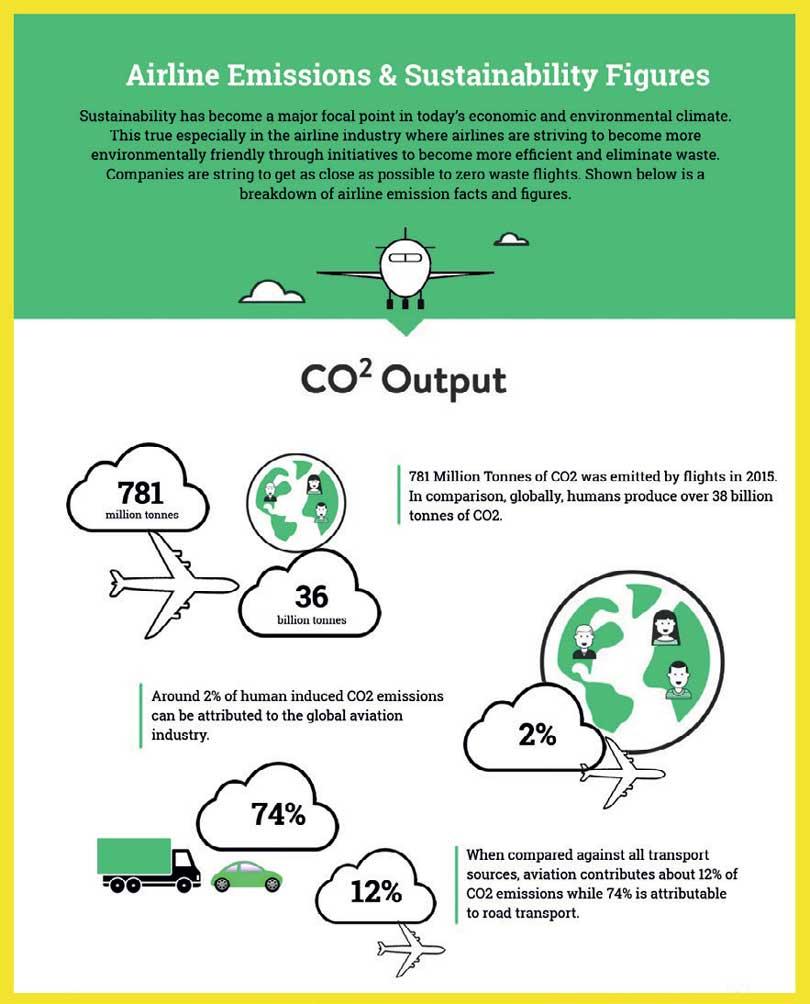16 Aug 2019 - {{hitsCtrl.values.hits}}
 Greta Thunberg, the 16-year-old climate activist and Olympic athlete Björn Ferry have stopped flying in an attempt to save the environment. This idea around reducing (or not flying at all) has become so well-known in their home country of Sweden that there is now even a word for it -- 'Flygskam' (pronounced fleeg-skahm) or ‘flying shame.’
Greta Thunberg, the 16-year-old climate activist and Olympic athlete Björn Ferry have stopped flying in an attempt to save the environment. This idea around reducing (or not flying at all) has become so well-known in their home country of Sweden that there is now even a word for it -- 'Flygskam' (pronounced fleeg-skahm) or ‘flying shame.’
In 2018, airlines carried 4.3 billion passengers around the world -- an increase of 38 million compared to the previous year . Worldwide, these flights produced some 895 million tonnes of CO2 in 2018 or about 2% of global greenhouse emissions.
WHY IS FLYING BAD FOR THE ENVIRONMENT?
Burning jet fuel releases greenhouse gases such as Carbon, Nitrous Oxide, water vapour and soot into the atmosphere. When soot and water vapour get together, they can cause contrails (vapour trails) which, coalesced with cold air, can lead to the formation of cirrus clouds that can have a heating effect on the planet. Combined with plastic and food waste on board flights as well as the energy it takes to keep an airport running and it adds up to one costly exercise for the environment.
This handy little word sums up the guilt conscious travellers have begun to feel when they fly due to the growing awareness on how flying affects the environment. Since there is presently no Carbon-neutral way to fly, many people avoid planes altogether.
Airlines in Sweden have already noticed a decrease in the number of passengers flying than in previous years (though they cannot confirm it owing to flygskam), with railway travel seeing a jump of 1.5 million additional people in 2018 on the previous year, its possible people are swapping flights for the train.
In the ‘2018 Sustainable Travel Report’ of Booking.com, it showed half (55%) of global travellers had a desire to make more sustainable travel choices than they were a year ago, but barriers include lack of knowledge and available or appealing options when putting this into practice.
WHAT ARE THE OTHER OPTIONS?
In countries such as Sweden, its fairly easy to switch to an alternative method of transport -- both domestically and internationally -- if you have the time; most of the country is connected by a modern rail service which also connects Denmark, Finland and Germany, opening up large parts of the world for overland travel including the UK, Russia and into Asia.
Crossing oceans is a bit trickier unless you either have friends with a sailboat or in Greta Thunberg’s case, a lift on board a 60-foot racing yacht which runs on solar panels and underwater turbines. If time isn’t an issue, unbeknown to most people, travellers can actually book empty cabins (complete with private bathroom and all meals provided) on freight and cargo ships that cross the main shipping routes across the globe.
While some travel companies will include Sri Lanka on their sailing itineraries, there is currently no commercial boat service to or from Sri Lanka. The last such service to exist was the luxury liner Scotia Prince which travelled between Tamil Nadu and Colombo that ceased operations in 2011 citing technical difficulties.
Believe it or not, taking the bus is actually the most environmentally-friendly way to travel.
HOW TO REDUCE THE EFFECTS OF FLYGSKAM
Not flying isn’t a practical solution for many. We have family in other countries, we send our children to school overseas and then there’s a simple fact that travelling brings us immense joy and a chance to experience various cultures. It can be unavoidable but if you do decide to fly, here are some tips to lower your Carbon impact:


27 Dec 2024 40 minute ago
27 Dec 2024 1 hours ago
27 Dec 2024 2 hours ago
27 Dec 2024 2 hours ago
27 Dec 2024 3 hours ago